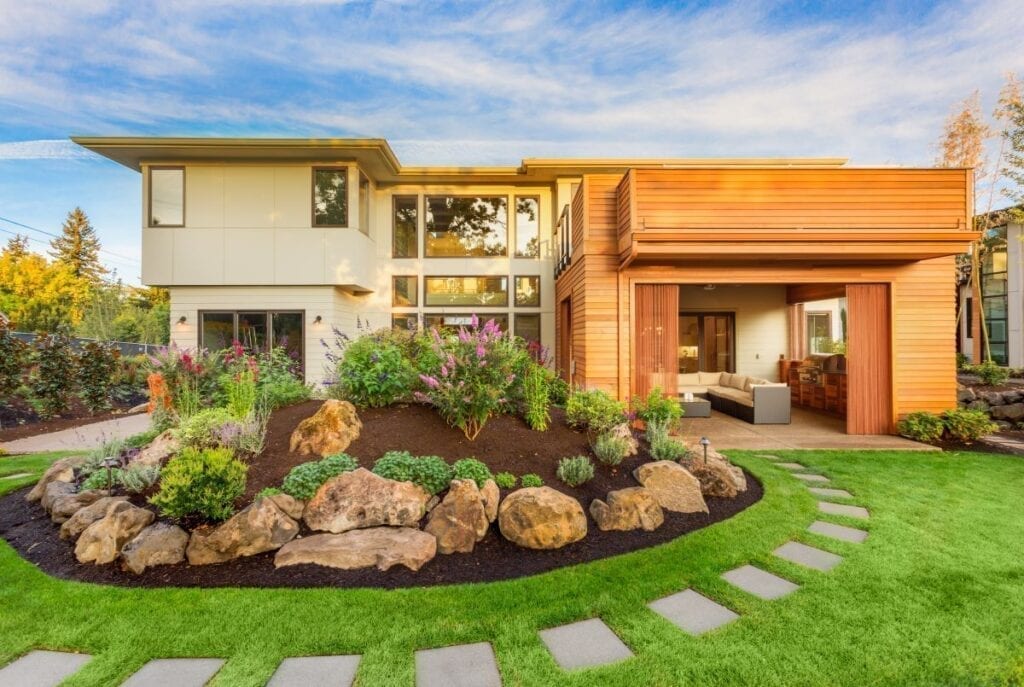Building a stunning and peaceful outdoor space is more than about visual appeal; it's about cultivating a sustainable environment that nurtures both nature and our health. As more homeowners seek to integrate their landscapes with sustainable practices, it becomes crucial to discover creative and sustainable landscape design ideas that not just improve the beauty of our backyards but also benefit the planet. Whether you are planning to create a remarkable backyard or refresh your front yard for extra curb appeal, including green principles can truly change your outdoor space.
In this article, we will explore various landscape design tips that prioritize sustainability while ensuring your surroundings remain visually appealing and functional. From applying local plants and developing low-maintenance gardens to including hardscaping elements, these strategies will assist you develop an outdoor environment that thrives over time. Join us as we review the best landscape design ideas that will inspire you to establish a calm and eco-friendly haven just outside your home.

Leading Garden Planning Ideas
Creating a stunning backyard begins with thoughtful planning and creative styling choices. One of the top landscape design ideas is to include layers of plants to construct depth and texture. Using a mix of high plants at the back, mid-sized shrubs in the middle, and shorter flowering plants at the front can attractively frame your space. This layered approach not only enhances visual appeal but also provides a habitat for various wildlife, enriching your garden’s ecosystem.
Another interesting concept is to integrate hardscaping features like pathways, retaining walls, and decks into your plan. These features can divide large areas of greenery and offer functional spaces for relaxation and entertainment. For example, a rock pathway leading to a cozy seating area can entice guests to explore your garden while adding structure to the landscape. Creative hardscaping also allows for the use of different materials, which can match your home's architectural style.
Lastly, reflect on introducing sustainable practices through eco-friendly landscaping. Utilizing native plants is a wonderful way to support local ecosystems and reduce maintenance needs. These plants are adapted to your environment, requiring less water and no chemical fertilizers. Additionally, features such as rain gardens, which help control stormwater runoff, can be both beautiful and beneficial. Incorporating these ideas will not only establish a serene outdoor space but also promote environmental health.
Sustainable Landscaping Tips
One of the most effective ways to create an green landscape is to incorporate native plants into your design. Indigenous species are well fitted to the local climate and soil conditions, which means they require minimal water and maintenance than exotic plants. By picking native plants, you can also benefit local wildlife, including pollinators such as bees and butterflies, encouraging a healthy environment in your backyard. In addition, these plants often flourish without the need for chemical fertilizers and pesticides, making them a green choice for your landscape.
Adopting water-efficient practices is another important aspect of green landscaping. Think about using trickle irrigation systems or rainwater harvesting techniques to minimize water use. Adding permeable pavements and rain gardens can help handle runoff and allow rainwater to percolate back into the ground, reducing the need for supplemental watering. Using mulch can also help retain soil moisture and suppress weeds, which ultimately minimizes the need for herbicides and further conserves water.
Lastly, explore adding hardscaping features that are both practical and sustainable. Materials like upcycled stone or eco-friendly wood can enhance your outdoor space while reducing environmental impact. Structures such as trellises or arbors can provide shade and minimize the need for further watering in adjacent areas. By carefully blending hardscaping with your landscape design, you can create a balanced environment that honors nature while maintaining aesthetic appeal.
Selecting the Right Design Components
Choosing the best design components is essential for developing a harmonious and aesthetic outdoor space. Think about the aesthetic of your property when picking features such as pathways, outdoor areas, and building features. Modern homes often benefit from sleek lines and simple designs, while classic homes may seem more at ease with intricate details and gentle curves. Integrating https://wildwoodlandscape-fl.com/ will boost the overall appearance and create a smooth connection between your home and garden.
A further important consideration is the decision of plants. Select indigenous plants that flourish in your area, as they require less upkeep and create valuable habitat for regional species. Take into account the color, feel, and seasonal variations of vegetation when creating your garden. Combining different plant types can produce a vibrant mosaic of colors and shapes, making your garden more dynamic year-round. Moreover, be mindful of the scale of plants in relation to your area to maintain balance and equilibrium.
Hardscaping elements, such as natural stone, patios, and enclosures, can also significantly impact your outdoor area’s design. These elements not only offer functionality but can also add aesthetic value. Including barriers or planters can define spaces and form levels in a flat yard, while walkways can lead visitors through your garden. When merging hardscaping and softscaping, look for textures and shapes that complement each other, to create a harmonious blend that enhances your backyard's overall atmosphere.
